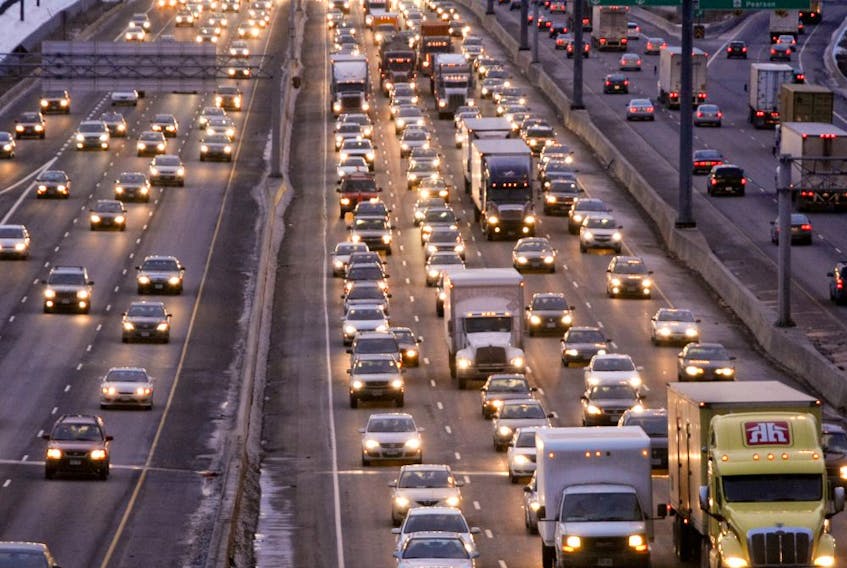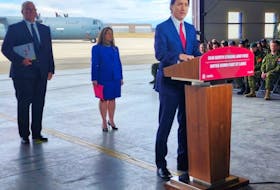One of the big attractions of idyllic rural retreats is that most other people can’t afford them.
The Earl Spencer certainly knows this. Undoubtedly much of the allure of the vacation property the earl bought in Ontario’s Muskoka cottage country is the quiet and solitude the area provides. The lake on which it sits is entirely surrounded by private properties, with no public access, which helps keep out the riffraff. Locals hope the earl, the brother of Princess Diana, and his Edmonton-born wife will keep it that way.
Residents in the hilly belt of countryside north and west of Toronto feel much the same way. The region contains some of the prettiest, greenest, most pleasant small communities in the province, with plenty of farmland, acres of forest and numerous communities for people who want big houses away from the noise and mayhem of Toronto, which is still just an hour or so away. One of the few real annoyances in the quaint community of Caledon, for instance, is that when the trees change colour in the fall, it attracts hordes of outsiders who are eager for a glimpse of their glory.
It’s no surprise, then, that many locals are up in arms over a plan to build a major highway nearby. Highway 413 would run from a point north of Vaughan, through miles of farmland and cozy communities, in a southerly curve to reach the city’s western suburbs. It would connect to five of the province’s busiest highways, three of them running north-south, two east-west.
The idea is to funnel some of the traffic off those overcrowded routes and divert truck traffic from barrelling through the city on Highway 401. Shelved by a previous Liberal government that was hard-pressed for rural support, the project was revived by Premier Doug Ford’s development-friendly Conservatives.
The forces of resistance are already marshalling for a major pushback. As reported by In the Hills — a local magazine that’s replete with articles on wine, horses and local dining — all the usual suspects are preparing their placards. As causes go, it’s a natural for environmentalists and their lawyers, climate campaigners, agriculture organizations, eco planners, community activists and anyone who moved there to get away from developers (other than the ones who built local homes). Given that the entire area was once inhabited by Indigenous peoples, there’s almost certainly room for some anti-colonialist outrage, even if it has to come from local colonials.
As is usually the case in these situations, the word “sprawl” gets used a lot. No one wants more sprawl on top of existing sprawl. It already extends all the way from Oshawa around Lake Ontario to the United States border at Niagara Falls. Stopping sprawl has been at the heart of the resistance for 50 years, since former Toronto mayor David Crombie voiced the novel idea that cities shouldn’t just be big, but also livable. (Crombie, by the way, is against the new highway.)
The problem is that the sprawl has sprawled despite all efforts. It extends far and wide in almost every direction from the city centre, far beyond what anyone could have imagined in Crombie’s day. Popular as his ideas were, and remain, Toronto has become a megalopolis that keeps getting bigger because that’s where the money, the energy and the dynamism is. Thanks to ideas like Crombie’s, it’s still a livable place with many family friendly neighbourhoods. Unfortunately, if you don’t already live there, you better have a million dollars or two if you hope to move in.
Affordability is a critical problem for Toronto. Even cramped, tiny cubicles in the sky are out of reach, either too expensive or too small to keep a normal-sized dog, much less a family. Much of the lakefront has already been hidden behind condo blocks, and ever-higher towers are being crammed onto ever-tinier footprints. One “ monster tower ” will rise a reported 95 storeys, the tallest structure in the city next to the CN Tower, with units starting at over $800,000 . An 87-storey beanpole — artists’ depictions look about as wide as an elevator shaft — is set to go up at the intersection of Bay and Bloor streets, one of the city’s busiest corners. And there’s lots more.
At ground level, little has been done to prepare for the traffic — human or vehicular — that these will produce. Transit infrastructure that planners have said for decades is crucial to livability and gridlock-avoidance hasn’t been built. A few projects are in the works after repeated delays, but won’t begin to be enough. The narrow downtown streets are the same ones built to serve a city a quarter the size, if that.
Opposition to expansion means the main road routes in and out of the city are perpetually at a standstill, while city council regularly hears demands to make it worse by taking down the Gardiner Expressway. A single test project to limit traffic on King Street produced a howl of protest from merchants. Though government-backed infrastructure projects have spent years widening some highways, passenger vehicles increasingly find themselves walled in by armies of trucks.
A silver lining of the COVID-19 pandemic has been the vast relief felt by commuters who have been freed of the need to actually travel downtown for work. Much of the sprawl results from people looking for some place safe and affordable to live. A lot of them aren’t eager to return.
People have to live somewhere. If they can’t afford the city — which the vast majority can’t — you can’t also put up walls outside its borders. Banning roads just makes life tougher for those who cannot afford an urban perch. Some of the farmers along the new highway’s route have been there since the mid-1800s. Of course, Toronto at the time was a muddy little patch of dirt roads and horse dung, where the big news was the construction of the province’s first railway. Things have moved on a bit since then.
National Post
Twitter.com/kellymcparland
Copyright Postmedia Network Inc., 2020









